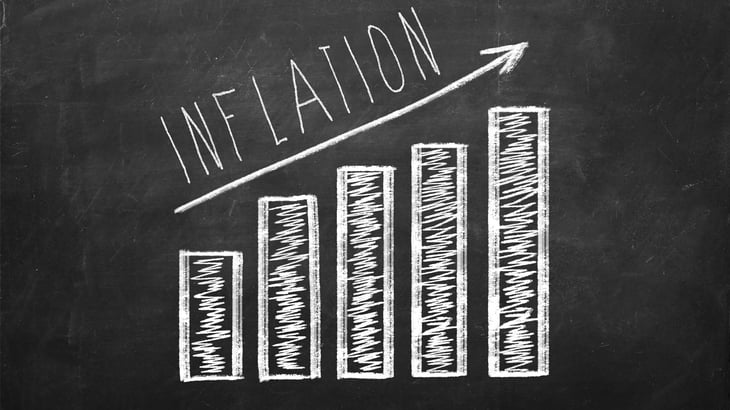
Americans soon will enjoy greater access to retirement plans and be able to delay withdrawing their savings, thanks to year-end legislation that President Joe Biden is expected to sign shortly.
The $1.7 trillion appropriations package passed by the U.S. Senate on Dec. 22 and the House of Representatives on Dec. 23 funds the government for another year, thus avoiding an otherwise imminent shutdown. But it also contains numerous other legislative efforts.
One is the Secure 2.0 Act. As its name implies, this legislation builds upon the changes to retirement law that were part of the Setting Every Community Up for Retirement Enhancement Act of 2019, also known as the Secure Act.
Specifically, the Secure 2.0 Act will accomplish the following major changes.
These provisions, among others, will help millions of workers, ranging from recent college graduates who don’t know where to start preparing for retirement to those older workers who are closest to the goal line. It will also help retirees hold on to more of their retirement savings for longer.
Raise the age for mandatory withdrawals

The Secure Act of 2019 raised the threshold at which people generally must start withdrawing required minimum distributions (RMDs) from their retirement accounts to the year in which they turn age 72, up from 70½.
The Secure 2.0 Act will further raise that age to 73 starting Jan. 1, 2023, and eventually to 75 in 2033.
Reduce RMD penalties

As we explain in “3 Tax Penalties That Can Ding Your Retirement Accounts,” current law harshly penalizes those who fail to withdraw their required minimum distributions from retirement accounts on time: The amount of the fine is equivalent to 50% of the amount of the RMD they did not take on time.
The Secure 2.0 Act will reduce the penalty to 25% and provide taxpayers the opportunity to further soften the penalty to 10% by quickly correcting the mistake and withdrawing the full required amount.
This provision takes effect in 2023.
Index the IRA catch-up contribution limit for inflation

Currently, people age 50 and older can contribute an extra $1,000 per year to an individual retirement account (IRA), known as “catch-up contributions.” That $1,000 amount is not indexed for inflation, meaning it does not increase when inflation rises.
The Secure 2.0 Act will index that amount, allowing it to keep pace with inflation, starting in the 2024 tax year — the one for which your return is due by April 2025.
Increase catch-up contribution limits for older employees

This change will add opportunities to save for employees ages 60 through 63 who have workplace retirement plans, raising their catch-up contribution limit to $10,000.
This provision will take effect in 2025, and the higher catch-up contribution limit will be indexed for inflation in subsequent years.
Expand automatic enrollment in 401(k) and 403(b) plans

With some exceptions, new employees who become eligible to contribute to 401(k) and 403(b) workplace retirement plans will be automatically enrolled in them.
Their initial automatic contribution will be 3% to 10% of their pay, and the rate will increase by 1 percentage point each year until it reaches at least 10%, unless a worker changes the percentage or opts out of contributing altogether.
This provision will take effect starting with the 2025 retirement plan year.
Expand retirement saving options for part-time workers

The Secure 2.0 Act also requires employers to allow certain part-time workers to participate in their employers’ 401(k) plan or in some cases 403(b) plan, with the exception of union plans, which are exempt from this provision.
The new savings opportunity will be available to part-time employees with at least one to three years on the job, depending on the situation.
Create a retirement lost-and-found

The Secure 2.0 Act calls for the U.S. Department of Labor to create a national database for Americans’ retirement plans that is online and searchable. This retirement savings lost-and-found, as the bill describes it, will enable people who have lost track of a pension or 401(k) to search for the contact information of the plan administrator.
This provision gives the Department of Labor two years to create the database.
Help states locate owners of matured savings bonds

The Secure 2.0 Act requires the U.S. Department of the Treasury to provide each state with certain relevant information about the owners of matured, unredeemed savings bonds with a last known address in that state.
States may in turn use that information to locate a bond’s registered owner just as they would do to facilitate the recovery of other types of abandoned property.
This provision will take effect on the same date that the president signs the legislation into law.
Enable matching retirement contributions for student loan payments

The Secure 2.0 Act will allow an employer to “match” a worker’s student loan payments by making equivalent contributions to the worker’s retirement plan. For example, if you make a $100 student loan payment, your employer could make a $100 contribution to your 401(k).
According to an official summary, this provision “is intended to assist employees who may not be able to save for retirement because they are overwhelmed with student debt, and thus are missing out on available matching contributions for retirement plans.”
This provision will take effect starting with the 2024 retirement plan year.
Enable rollovers from 529 plans to Roth IRAs

This provision will allow for tax-free and penalty-free rollovers from 529 college savings plans to Roth individual retirement accounts (IRAs) in certain circumstances.
Such rollovers will be limited to a total of $35,000 over the course of an account beneficiary’s lifetime, and they will be restricted to 529 accounts that have been open for more than 15 years.
The official summary of the Secure 2.0 Act notes:
“Families who sacrifice and save in 529 accounts should not be punished with tax and penalty years later if the beneficiary has found an alternative way to pay for their education. They should be able to retain their savings and begin their retirement account on a positive note.”
This provision takes effect in 2024.
